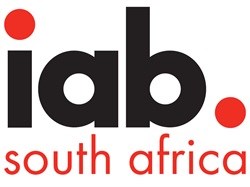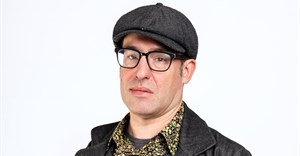
Subscribe & Follow
Jobs
- Head of Digital Johannesburg
- Social Media Specialist Johannesburg
- Digital Brand and Marketing Manager Cape Town
- Digital Projects Administrator Pretoria
- Mid-level SEO Specialist Cape Town
- Digital AI Intern Cape Town
- Paid Media Specialist Cape Town
- Video Editor Cape Town
- Content Creation Lead Cape Town
- Copywriter Cape Town
Breaking our attachment to traditional advertising

This is due to a combination of three things:
1. Huge attachment to traditional advertising. Brands are accustomed to commissioning a TV or radio advert. It’s something they’ve done many times and, besides, there’s a kind of glamour in it. Why else do you hear advertisers calling TV adverts 30-second ‘films’?
2. A lack of understanding of digital. Although we are completely saturated with digital, few people genuinely understand how to use it for marketing purposes. There is still a great deal of education required.
3. Brands don’t necessarily get the results they would like. The digital ecosystem is still flawed with regards to how people spend their money and the results they get. It’s understandable that if a brand dedicates a large chunk of budget to a digital campaign that doesn’t deliver, they will be more skeptical of digital and fall back onto tried-and-tested marketing tactics.
All the while digital penetration in South Africa is racing ahead. All the graphs are pointed steeply up (the only medium where this is true) – and so advertising, at some point, has to follow.
When agencies should drive digital spend
Whose responsibility is it to drive advertising spend in digital? Does the onus lie on the agencies that create the campaigns or the marketers who commission them? Agencies definitely have a responsibility to explore digital platforms and demonstrate the value of digital campaign. In our current advertising market, this is uncomfortable as we have agencies rooted in digital and agencies rooted in ATL traditional advertising. The traditional agencies are being pushed into the digital space, but it’s not their comfort zone. If you ask any ad agency creative what they love to do, they will say they want to make big, expensive TV commercials that are about brand building. The promotional stuff, the stuff that is targeted around results and returns, is simply not as sexy.
It starts with measurement
Ultimately, I believe, a good campaign proves its mettle in its return on investment. This is a view that is gaining traction worldwide. In digital, we are developing increasingly accurate measuring tools that allow us to demonstrate value and show whether something is working or not. We can measure from the moment a person’s eyeballs hit an advert until they make a purchase. In fact, we can track without boundary, as most people carry their cellphones – a constantly connected device that is sending and receiving tons of data – on them at all times. Agencies have to use the data responsibly, but the fact that it is available means they have an obligation to expose to their clients what is working, what isn’t working and continually improve.
While results are also tracked in traditional advertising, it is typically post-campaign research-based. This is where the difference between research and engagement becomes critical. Engagement tracks realtime action while post-campaign research that includes concepts such as share-of-voice and brand perception is still a bit fuzzy. In that sense, tracking traditional media is easier. If you spend money on an advertising campaign, you’re likely to find some metric that affirms that it worked.
The paradigm for success has shifted
In the old style of advertising, you spent money making something, then you spent money booking space, and six months later you got a report saying whether it worked or not, after which you would look for evidence of this in your sales. Nowadays you know in the first minute that you put up a piece of content whether it’s working. You can tell if they dwelled on it or engaged with it straight away. If it’s not working you can change it. That’s the new paradigm. You’re never finished. You’re always tweaking and improving it until it gives you the result that you look for. That’s the most responsible way to spend advertiser’s money right now.
That’s not to say that traditional advertising is fruitless. There’s no question that, depending on the market segment, TV, radio and print still have a commanding reach. However, the end is nigh for these media in their current forms. In time, older generations of brand managers and marketers will be replaced by people who have grown up immersed in digital and aren’t enthralled by TV.
Transition is the new normal
We’re in a time of transition, and have to get used to the fact that transition is the new normal. Until the progress of technology stops, the way we communicate will constantly be shifting, evolving and rendering previous approaches redundant. Never again will be have a period like the 20th century where media was stable for decades. We had TV for 50 years and radio has remained almost the same since the First World War. Now, we live in an age where the internet has changed 10 times in the past 20 years. We have to get comfortable with continual change and disruption.
Marketers must work with agencies to drive innovation
While agencies are responsible for reporting the benefits and genuine results of digital, marketers need to empower agencies to innovate in the space. While many agency people will say they need budget, I don’t think that innovation only comes from big budgets. It comes from being innovative. Marketers need to ask for innovation and they need to ask agencies how innovative they’ve been. They need to give them the kind of briefs and opportunities that give them a chance to come back with something brand new. They need to make room for crazy.
In the same breath, this also means making room for failure. We have learnt from start-up culture and Silicon Valley that failure is OK if it can be chalked up to experience. Not every campaign can give brilliant results or win an award. We know it’s not easy for marketers who are measured strictly within their jobs and their businesses, but the clients that are winning in advertising’s new landscape right now are the ones with courage. It’s with an attitude of courage, openness to channels and a commitment to honest metrics that we will make the most of digital, and create iconic work that people connect with, and remember.

- IAB South Africa announces 2025 Bookmark Awards season and new jury president09 Dec 15:04
- Join us for 2024’s last IAB SA Actionable Insights episode27 Nov 16:16
- IAB South Africa announces acting CEO as Razia Pillay steps down26 Sep 12:44
- Mark1 and more celebrate digital excellence at the 2024 Bookmark Awards14 Aug 11:04
- Jacaranda FM comes out tops for online radio audience29 Jul 13:13


















